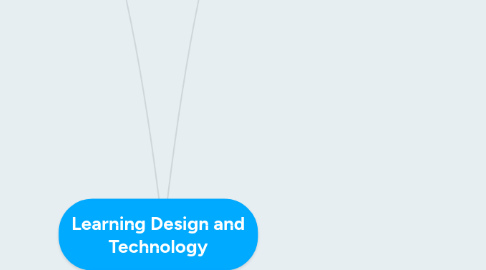
1. Learning Theories
1.1. Behaviorism
1.1.1. Definition
1.1.1.1. Behaviorism is an orientation to learning emphasizing Learning Theory and Instructional Design methodically time-controlled events and constructed environmental conditions intended to bring about particular behavioral responses. (Mcleod)
1.1.2. Types
1.1.2.1. Classical Conditioning
1.1.2.1.1. The behavior becomes a reflex response to an antecedent stimulus.
1.1.2.1.2. Theorist: Ivan Pavlov
1.1.2.2. Contiguous Conditioning
1.1.2.3. Operant Conditioning
1.1.2.3.1. An antecedent stimuli is followed by a consequence of the behavior through a reward (reinforcement) or a punishment.
1.1.2.3.2. Operant conditioning reinforces this behavior with a reward or a punishment. A reward increases the likelihood of the behavior recurring, a punishment decreases its likelihood
1.2. Cognitivism
1.2.1. Definition
1.2.1.1. Cognitivism carries the notion that “[l]earning involves the reorganization of experiences in order to make sense of stimuli from the environment. Sometimes this sense comes through flashes of insight” (Merriam and Caffarella, 1999, p. 254).
1.2.2. Views on learning
1.2.2.1. Learning as information transmission & processing. Learning viewed as the acquisition of new information.
1.2.2.2. Focus on the mental processes (e.g., memory)
1.2.2.3. Computer metaphor – Learners take in information, hold it briefly in short-term memory, and store it permanently in long-term memory
1.2.3. Model
1.2.3.1. Information Processing Model
1.2.3.1.1. Cognitive Information Processing Model (Atkinson & Shiffrin, 1968) is a prominent model used by cognitivists to explain learning
1.2.3.1.2. Stage theory
1.3. Constructivism
1.3.1. Definition
1.3.1.1. Constructivism is a perspective in education, is based on experimental learning through real life experience to construct and conditionalize knowledge.
1.3.2. Views on learning
1.3.2.1. Humans learn by constructing their own representations/models of experiences
1.3.2.2. Knowledge constructed may not reflect the external reality
1.3.2.3. Construction closely linked to social-cultural contexts
1.3.2.4. Meaning is imposed by people and cultures
1.3.2.5. So, for example, a constructivist might say that there is nothing inherently correct about the way we classify living things (genus, species, etc.)
1.3.2.6. This classification system is a human invention, and it is subject to revision or replacement.
1.3.2.7. Thus, when we teach this classification system, we should teach it not as fact, but as the current system accepted by scientists.
1.3.2.8. We should also teach about the process of creating a classification system, not just the end product.
1.3.3. Types
1.3.3.1. Personal/individual constructivism
1.3.3.1.1. Personal discovery of knowledge
1.3.3.2. Social constructivism
1.3.3.2.1. Learners exchange, share & negotiate ideas to form mutually agreed understanding
2. Learning Technology
2.1. use of technology to support learning
2.1.1. Web 2.0 technologies
2.1.1.1. Tools
2.1.1.1.1. Podcast
2.1.1.1.2. Blog
2.1.1.1.3. Twitter
2.1.1.1.4. 3-D immersive virtual worlds
2.1.1.1.5. and so on
2.1.2. 7 principles of good practices in undergraduate education
2.1.2.1. 1. Good Practice Encourages Student-Faculty Contact
2.1.2.2. 2. Good Practice Encourages Cooperation among Students
2.1.2.3. 3. Good Practice Encourages Active Learning
2.1.2.4. 4. Good Practice Gives Prompt Feedback
2.1.2.5. 5. Good Practice Emphasizes Time on Task
2.1.2.6. 6. Good Practice Communicates High Expectations
2.1.2.7. 7. Good Practice Respects Diverse Talents and Ways of Learning
3. Instructional Design
3.1. Definition
3.1.1. A system of procedures for developing education and training programs in a consistent and reliable fashion.
3.2. Models
3.2.1. ADDIE
3.2.1.1. Analyze
3.2.1.1.1. Learner Analysis
3.2.1.1.2. Task Analysis
3.2.1.1.3. Performance Analysis
3.2.1.2. Design
3.2.1.2.1. Content
3.2.1.3. Develop
3.2.1.3.1. Content
3.2.1.3.2. Work of developers
3.2.1.4. Implement
3.2.1.4.1. Content
3.2.1.5. Evaluate
3.2.1.5.1. Methods
3.2.2. ASSURE
3.2.3. Dick and Carey System Approach
3.2.3.1. step-wise flow chart
3.2.3.1.1. First element
3.2.3.1.2. second and third element
3.2.3.1.3. fourth element-performance objectives
3.2.3.1.4. fifth element-Instructional methods and materials
3.2.3.1.5. sixth element-Formative evaluation
3.2.4. Waterfall
3.2.5. Kemp Design
3.3. Instructional Theory
3.3.1. Conversation(discussion)
3.3.2. Elaboration
3.3.3. Situated Learning
3.3.4. Merrill first principles of instruction
3.3.4.1. Problem
3.3.4.1.1. Learning is promoted when learners are engaged in solving problems.
3.3.4.2. Activation
3.3.4.2.1. Learning is promoted when existing knowledge is activated as a foundation for new knowledge.
3.3.4.3. Demonstration
3.3.4.3.1. Learning is promoted when new knowledge is demonstrated to the learner.
3.3.4.4. Application
3.3.4.4.1. Learning is promoted when knowledge is applied by the learner.
3.3.4.5. Integration
3.3.4.5.1. Learning is promoted when new knowledge is integrated into the learner's world.
3.3.5. Robert Gagné’s 9 events of learning
3.3.5.1. 1.Gaining attention
3.3.5.1.1. Learning Process :Attention
3.3.5.2. 2.Information the learner of the objective
3.3.5.2.1. Learning Process :Expectancy
3.3.5.3. 3.Stimulating recall of prior learning
3.3.5.3.1. Learning Process :Retrieval to working memory
3.3.5.4. 4.Presenting the stimulus material
3.3.5.4.1. Learning Process :Pattern recognition; selective perception
3.3.5.5. 5.Providing learning guidance
3.3.5.5.1. Learning Process :Chunking, rehearsal, encoding
3.3.5.6. 6.Eliciting performance
3.3.5.6.1. Learning Process :Retrieval, responding
3.3.5.7. 7.Providing feedback about performance and correctness
3.3.5.7.1. Learning Process :Reinforcement, error correction
3.3.5.8. 8.Assessing performance
3.3.5.8.1. Learning Process : Responding, retention
3.3.5.9. 9.Enhance retention and learning transfer
3.3.5.9.1. Learning Process : Retention, retrieval, generalization
3.3.6. Bloom’s Taxonomy
3.3.6.1. Bloom's taxonomy refers to a classification of the different objectives that educators set for students (learning objectives)
3.3.6.1.1. Knowledge
3.3.6.1.2. Comprehension
3.3.6.1.3. Application
3.3.6.1.4. Analysis
3.3.6.1.5. Synthesis
3.3.6.1.6. Evaluation
